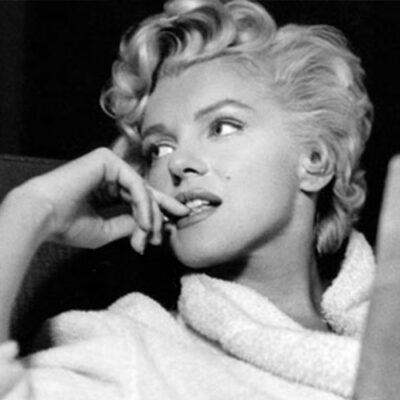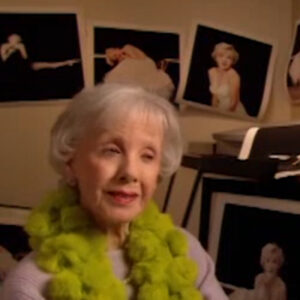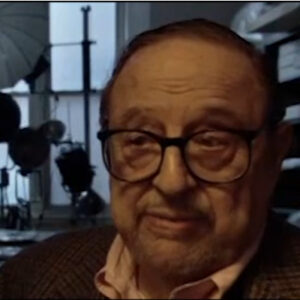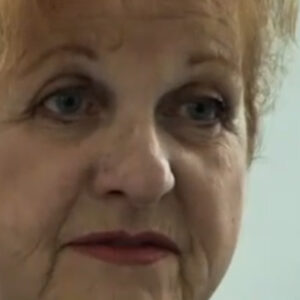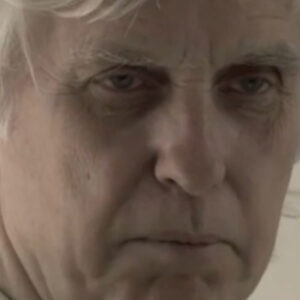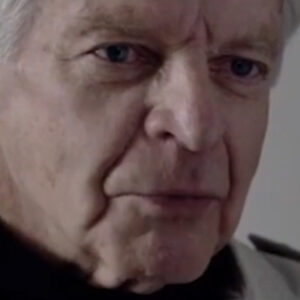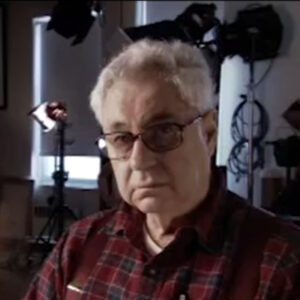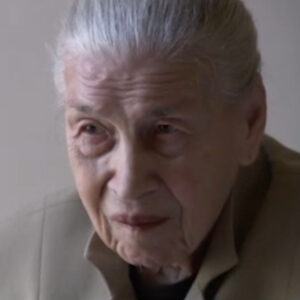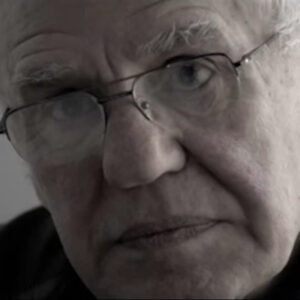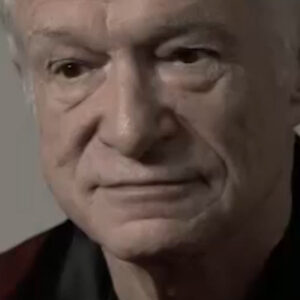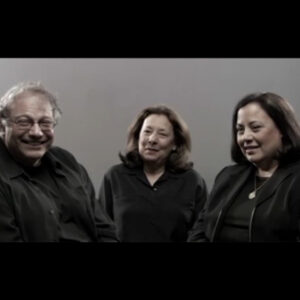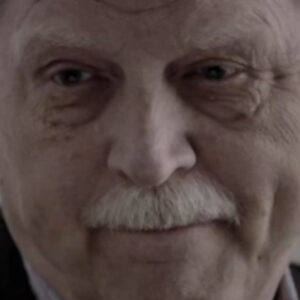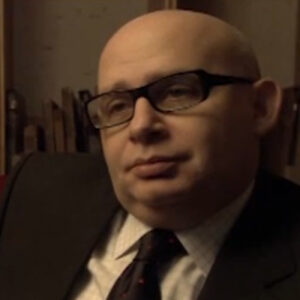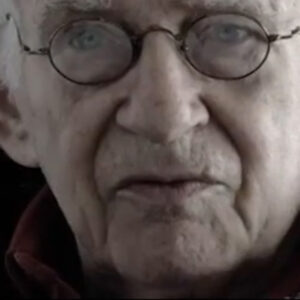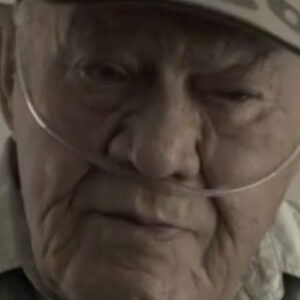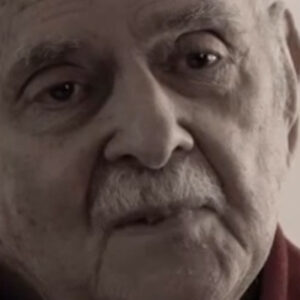Patricia Bosworth: OK.
Interviewer: Start by telling me about that time and whole feeling of that time in the studio in New York.
Patricia Bosworth: Well, it was for me the most exciting time in my life. It was the high point, really. I would have to say it was the high point of my life getting into the Actor’s Studio. I auditioned four times, took a year. I was 18 when I got in. I got in with maybe five or six other people. And it was truly a thrill because the actor studio was the place to be if you were an actor in New York or anywhere, really? Because, you know, it began with Brando and and Kazan. And so I was very, very I was on a high level. And at the very same time, right after I got into the studio, I met Marilyn Monroe. So it was this incredible, incredible time for me. And right after maybe a couple of days after the auditions, Valerie Beddows gave a huge party down Greenwich Village for all the membership of the studio. And this included, you know, unknowns like myself and then all the stars, Paul Newman, Julie Harris, Anne Bancroft, Jerry Paige, of course, Marilyn Monroe, Harry Belafonte. It was it was just unbelievable to be there in this room with all these fantastic talents and very exciting. And the party went on for hours dancing and carrying on. And I just sort of stood on the sidelines because I was very shy. But around 2:00 in the morning, I guess it was the the party was kind of winding down. And I walked out of the house. And as I walked out of the house, Lee Strasberg, who was the artistic director of the Actor’s Studio and, you know, Marilyn Monroe’s coach said, do you want a lift or have a cab outside? And I said, sure, but I couldn’t quite understand why he had the cab right outside. It turned out that he had a regular cab driver, a special cab driver named Marty Freed, who was a very handsome looks sort of like Tony Curtis. And he drove Lee everywhere in New York. And in return for which he get got acting lessons, free acting lessons. So anyway, I got in the cab, got in the backseat.
Interviewer: Was this the first time you met him? Because I used the data, right?
Patricia Bosworth: Yes. I was going to tell you that later. But do I know?
Interviewer: Go ahead.
Patricia Bosworth: Anyway, so I got in the cab and I got into the backseat and then I realized that Marilyn Monroe was huddled in the corner, sort of dreamily smoking a cigarette. And I just couldn’t believe it that I would be sitting next to Marilyn Rowe. I didn’t say anything. I just sat there. And about two minutes later, Harry Belafonte got in and sat on the other side of me. So there I was with her. Harry Belafonte on one side, Marilyn Monroe. The other means medal. I was just in seventh heaven. But of course, I didn’t say anything. Nobody said anything. And the cab took off. And then it started rain and Marilyn Monroe gone. It took off. Her coach was running this polo coat and I realized she was wearing this beautiful necklace of vintage pearls. I mean, they looked like vintage pearls or a beautiful, glowing, creamy, lustrous. And they sort of, you know, they were almost like her skin. Her skin was the most beautiful skin I’d ever seen in my life. I just couldn’t help saying, those are gorgeous pearls, Miss Monroe. I couldn’t I wouldn’t say Marilyn. And she said the emperor gave them to me. I said, the emperor. She said, Emperor Hirohito of Japan. When Joe DiMaggio and I got married, we were on our honeymoon and the emperor gave me these pearls. And in a private ceremony, I said, wow. And with that, Lee Strasberg turned around the front seat. Me said, Darling, did you say the emperor gave you those pearls? And Marilyn said, Yes, Lee. And he said, Oh, that’s so wonderful. And he was so enthusiastic and so intense. And usually this man was dower and, you know, sort of somber, never cracked a smile. He was so enthusiastic. I thought, wow, I’m seeing something new with Lee Strasberg. Again, silence. For a long time, we just drove in silence uptown. And then Marilyn spoke again. She said, I want to learn how to drive. And with that, Marty Freed in the front seat said, I’ll teach you how to drive. And he did after that night, apparently, he gave her dozens of lessons. The reason I know this is that I started to date Marty, except I really didn’t date him because every time we would make the date, he would call me on the phone. He’d say, Patty, I’m sorry, I can’t make it tonight. I’m teaching Marilyn how to drive. Finally, I said to him, Marty, it’s either me. And, of course, you can imagine who they chose. But we we did remain friends for the rest of our lives.
Interviewer: She just. What was this? To be that close? What was.
Patricia Bosworth: Well, she was she was iridescent, she was glowing, she was she had this kind of Marilyn did this indefinable, mysterious quality that made her a star. And yet you just had to look at her. You had to keep looking at her. I don’t know quite what it was. She had a presence of outer Arabians, really. And it came when she did scenes at the studio. She a really one scene in the studio, you see? Yes, I did. I saw it was Anna Christie with Matt. Maureen Stapleton. Everybody in the world was there for that day, too. And she was very nervous. And Maureen STABLEMAN, who was a great actress, was also nervous. But I thought terrific. And I remember after Lee praising Marilyn Monroe and kind of, you know, not registered, ignoring Maureen, which is not very nice. I didn’t think. But. But she was she had a presence. There was no question about it. She was the greatest. I think one of the greatest stars in the whole world. What was the scene like? Wish. She was good. She was she was very vulnerable, tremulous, tentative. But but again, because she was Marilyn Monroe, she had this indefinable something, the star quality. You know, it was as if she was carrying her own spotlight.
Interviewer: As a young woman in that time, which was sort of preceding creating the whole Gloria Steinem take on. And see. And she would have been at that point in nineteen fifty four. Yes. Fifty five. So she was 30.
Patricia Bosworth: No, she was younger than that, I think. She died at 33. She died at six thirty six. Well then she died in 1963. I think.
Interviewer: She was born twenty six because she would be 80 this years. Twenty nine.
Patricia Bosworth: Right. Right. Twenty nine.
Interviewer: She was a decade plus older.
Patricia Bosworth: Right. Right.
Interviewer: And it just it was a totally different time for women and movie stars and women looking at movie stars.
Patricia Bosworth: Oh, absolutely. You didn’t think I mean, you weren’t thinking of women’s liberation, at least not then 10 years later. Certainly I was, but. But not then. I mean, you just thought of her as this great movie star. We all wanted to be like Marilyn Monroe. We wanted to be great stars. Didn’t quite know how much I mean. And what about the look of her, the blonde? Well, she was blonde. Very, very, very, incredibly sexy. She was a little spaced out. I mean, she was, you know, probably on drugs then. I sometimes noticed that she wasn’t as clean as I thought she should be. On the first night I saw in the cab, she had dirt under her fingernails, which I thought was sort of surprising. And her roots were dark. But, you know, when she came to the studio, she just wanted to be just an ordinary person. She didn’t dress like a movie star. She always was usually without makeup. She was always wearing his old polo coat. Her hair was not done. Was not quaffed. Didn’t go to the hairdresser. She really. We know she is. Famous story about when she. Some guy was going to do the scene with her and she called him up and she said, hello, this is Marilyn. And he didn’t know who it was. This is Marilyn. I’m doing the scene with you. Finally, she’s Marilyn Monroe. He had forgotten to a scene with Marilyn Monroe. But I mean, she wanted to be just an ordinary person at the studio. She didn’t want to be single out.
Interviewer: Was it daunting, though, even for people of the stature of Maureen Stapleton at that point to be doing scenes with her in the studio itself? People? Did people have a pretty I think to be in the studio, you already felt pretty good about yourself.
Patricia Bosworth: You felt good about yourself. What was tremendous pressure at two to to prove yourself, to show yourself to anytime you did a scene was was frightening because everybody in the world was there watching you. So although one hoped one wasn’t judged, you really were judged and you got I got a lot of jobs from the studio, from doing scenes from the studio.
Interviewer: So I have to say that the idea of doing a scene with her was that somehow daunting to people who were involved in those?
Patricia Bosworth: I think so, yes. I mean, we didn’t talk about it. It was just sort of a given that you were very, you know, nervous and on edge. And Lee was what was a taskmaster. And, you know, he’s a master teacher and and he could be very, very tough.
Interviewer: How was he with her in class? I mean, certainly.
Patricia Bosworth: Very, very gentle and very kind.
Interviewer: He was really very difficult.
Patricia Bosworth: Yes, he was. He was he was very different with the stars than he was with the ordinary souls like myself. Yeah, he’s very tough.
Interviewer: Know, I had a very mixed feeling about him.
Patricia Bosworth: Miller didn’t like him at all. He thought he was a fraud and a phony. I did not think that I. I thought he was best with the great the greatest talents. I thought he was the best, best with when I watched him work with Geraldine Page or Anne Bancroft in scenes. He he worked on details with him, details of acting.
Interviewer: That’s pretty, pretty amazing.
Patricia Bosworth: Yes, it was. Yeah.
Interviewer: Do you want to talk about the story, the Susan in the Pearls?
Patricia Bosworth: No. No, I don’t think so. What. What you mean how the pearls. Yeah, I don’t I don’t I don’t think how it connects at all really with with this particular thing.
Interviewer: I don’t know if we could talk a little bit about our friendship sort of out of the studio fridge with Strasbourg’s intervention.
Patricia Bosworth: Oh.
Interviewer: He just may never use it.
Patricia Bosworth: Oh, sure. OK, well. Well, Marilyn Monroe was like Lee Strasberg’s other daughter. I mean, Lee had his real daughter, Susan, who is this beautiful, wonderful girl who had, you know, created some sensation as Anne Frank on Broadway. And she was a good friend of mine, an absolute exquisite young woman and very, very intelligent. And she really sort of took a back seat after after Marilyn came into the Strasbourg’s life and that Marilyn Wood would stay with the Strausberg, sometimes live with them. And Susan had to give up her room. But the really sad thing was that lead totally ignored Susan and focused all of his attention on Marilyn. And this was very hurtful to to Susan and to Johnny, his son,.
Interviewer: And was never even but never the things I keep feeling about her and particularly about that relationship. And I think Mailer even talked about it was Miller a little bit that there was somehow she was there was no filling her up. There was no somehow getting her to begin to gain some confidence or to begin to have some sense of worse.
Patricia Bosworth: And I know she didn’t have much confidence in herself as an actress. And I know I remember hearing a story when she used to go to lunch at Sardi’s with Lee. It was Lee and Marilyn and Jane Fonda and maybe Madeline Sherwood. And Lee was constantly encouraging both Jane and Marilyn Rowe to do Shakespeare and Shaw and check off. And at one point he said to to Marilyn, I want you to do the three sisters. And and she just looked very frightened and she turned to James. And you you do the three sisters, not me. You know, she she was really scared to do any any classic. She was really afraid to do that.
Interviewer: And so when did you get a feeling, a sort of self, Faceman, from her when she was in that crowd of people?
Patricia Bosworth: Oh, yeah. I think I think she always wanted to bet herself, Sheila. That’s why I think she liked being with with with Miller, because he was a great intellectual, a great playwright. The fact that he was in love with her was was thrilling to her that a man of that stature, that intellect could love her.
Interviewer: OK.
Patricia Bosworth: She had no confidence in herself, really. I don’t think very sad.
Interviewer: I think so. I think. OK, good. Not anymore. Not quite enough.
Patricia Bosworth: The dynamic was was extraordinary and there was a real actress there, a real performer, a craftsperson, Maureen, who was doing as little as possible to give Marilyn a chance to shine. And Marilyn Monroe was not used to being in front of an audience, a live audience. And everybody in the world was there, was packed to the rafters with everybody waiting to hear her say her first lines. She was very, very nervous. So it was very hard to hear her. It was not it was really not that good. But again, it was Marilyn Monroe. So you may excuse us for her, but it was the it was the atmosphere that got to everybody. I think the fact that Marilyn Monroe was doing a scene at the Actors Studio.

